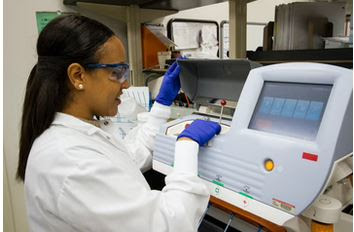What Is The Average Conversion Rate For Home Improvement Contractors?
In the competitive world of home improvement, contractors play a vital role in transforming houses into dream homes for their clients. The success of a contractor largely depends on their ability to convert leads into actual projects. In the digital age, where online marketing and lead generation strategies have become crucial, understanding the average conversion rate for home improvement contractors is essential for gauging performance and setting realistic goals. In this blog, we'll delve into what conversion rate means, the factors affecting it, and the average figures that contractors can use as benchmarks.
What Is Conversion Rate?
In the context of home attic conversion contractor improvement contractors, the conversion rate refers to the percentage of potential leads or inquiries that turn into actual projects. It is a pivotal metric that measures a contractor's effectiveness in converting prospects into paying clients. For instance, if a contractor receives 100 inquiries in a month and secures 10 projects. As a result, the conversion rate would be 10%.
Factors Affecting Conversion Rate:
Several factors influence a contractor's conversion rate, including:
1. Online Presence: A well-designed website and a strong online presence can significantly impact the likelihood of conversion. Positive online reviews, testimonials, and a professional portfolio can instill confidence in potential clients.
2. Customer Service: Prompt responses, clear communication, and excellent customer service play a crucial role in building trust and converting leads into clients.
3. Pricing: Competitive pricing that reflects the value of services offered can affect conversion rates. Clients are willing to pay more for quality workmanship and reliability.
4. Portfolio and Past Projects: A robust portfolio showcasing past projects allows potential clients to assess the contractor's capabilities and style, increasing the chances of conversion.
5. Referrals: Word-of-mouth referrals can be a powerful source of leads, as they come with built-in trust and credibility.
Average Conversion Rate for Home Improvement Contractors:
It is important to note that the average conversion rate can
vary depending on several factors, such as location, the scope of services
offered, target market, and the overall state of the economy. While there isn't
a universally fixed benchmark, various studies and industry experts suggest
that the average conversion rate for home improvement contractors falls between
10% to 30%.
However, it is crucial not to be disheartened if your conversion
rate doesn't fall within this range. Many successful contractors achieve higher
conversion rates through a combination of effective marketing strategies,
exceptional customer service, and a strong reputation.
Improving Conversion Rates:
If a contractor finds their conversion rate to be below their
expectations, several strategies can be employed to improve them:
1. Responsive Communication: Respond to inquiries promptly and professionally, as delayed responses may lead potential clients to seek services elsewhere.
2. Showcase Expertise: Highlighting your expertise through case studies, testimonials, and before-and-after images can instill confidence in potential clients.
3. Invest in Online Marketing: Utilize targeted online advertising and social media platforms to reach a wider audience and generate more leads.
4. Networking and Referrals: Building relationships with real estate agents, architects, and satisfied clients can lead to valuable referrals.
5. Offer Competitive Proposals: Tailor your proposals to meet the specific needs of each client while offering a competitive price.
Conclusion:
The average conversion rate for home improvement contractors serves as a valuable metric to assess performance and set goals. However, it is essential to remember that the conversion rate is not a static number and can be improved through strategic efforts. By focusing on excellent customer service, building a strong online presence, and showcasing expertise, contractors can increase their conversion rates and pave the way for a successful and thriving business in the dynamic industry of home improvement.
Factors Influencing Conversion Rate:
1. Seasonal Trends: Home improvement projects often exhibit seasonal patterns, with increased demand during certain times of the year. Contractors may experience higher conversion rates during peak seasons and might need to adjust their marketing strategies accordingly.
2. Type of Services Offered: Different types of home improvement services can lead to varying conversion rates. For example, contractors specializing in kitchen and bathroom remodeling may have different conversion rates compared to those offering roofing or landscaping services.
3. Lead Source: The source of leads can impact conversion rates. Leads from referrals, word-of-mouth, or repeat clients may have higher conversion potential compared to cold leads generated through online ads.
4. Qualification Process: Contractors who employ an effective lead qualification process can focus their efforts on potential clients who are more likely to convert. This can lead to a higher conversion rate as the contractor invests time and resources in promising leads.
5. Competition: The level of competition in a specific market can affect a contractor's ability to convert leads. In highly competitive areas, contractors may need to be more proactive and creative in their marketing and customer engagement strategies.





Comments
Post a Comment